Barcelona, a city renowned for its architectural marvels, is home to one of the most iconic structures in the world: the Sagrada Familia. This basilica, designed by the visionary architect Antoni Gaudí, is not only a masterpiece of design but also a symbol of the city’s rich cultural heritage.
Situated in the heart of the Eixample district, **The Imposing Location of Sagrada Familia in Barcelona** enhances its grandeur, drawing millions of visitors each year. Surrounded by vibrant streets and lush parks, the location offers a perfect backdrop that complements Gaudí's intricate designs and innovative use of light.
The Architectural Significance of Sagrada Familia in Barcelona
The Sagrada Familia stands as a testament to architectural ingenuity, showcasing the unique vision of Antoni Gaudí. Its design reflects a profound understanding of nature, as seen in the organic shapes and forms that characterize its structure. This basilica is often celebrated for its distinctive style, which combines elements of Gothic and Art Nouveau architecture, creating a harmonious blend that captivates architects and visitors alike.
One of the most striking features of the Sagrada Familia is its verticality. The soaring towers, reaching heights of up to 170 meters, are designed to inspire awe and represent the connection between heaven and earth. The intricate facades tell biblical stories through sculptures and reliefs, inviting viewers to contemplate their meanings while appreciating the artistry involved in their creation.
- Innovative Use of Light: Gaudí’s design incorporates an innovative approach to natural light, using stained glass to create a kaleidoscope of colors within the interior.
- Structural Techniques: The basilica employs hyperboloid structures and catenary arches, which not only enhance stability but also add to the aesthetic appeal.
- Symbolism: Each element of the Sagrada Familia holds significant religious and spiritual symbolism, from the Nativity facade to the Passion facade.
The ongoing construction of the Sagrada Familia has made it a living project, continually evolving while staying true to Gaudí’s original vision. This aspect not only highlights the architectural significance of the basilica but also reflects the commitment of the city to preserve its cultural heritage for future generations. The monument stands as a beacon of creativity and innovation, drawing admiration from around the world.
Exploring the Historical Context of Sagrada Familia's Location
The historical context of the Sagrada Familia's location in Barcelona is rich and multifaceted. Originally, this area, known as the Eixample district, was designed in the mid-19th century by Ildefons Cerdà to accommodate the city's rapid growth during the Industrial Revolution. The grid-like layout aimed to provide ample light and space, promoting a healthier urban environment.
Moreover, the choice of this specific site is significant due to its proximity to other important landmarks. The Sagrada Familia was strategically placed to enhance the spiritual ambiance of the district, surrounded by various churches and community centers. This location allows for a greater connection to Barcelona's historical roots, as it integrates religious, social, and architectural elements.
- Urban Development: The construction of the Sagrada Familia coincided with Barcelona's transformation into a modern city, making it a symbol of progress.
- Cultural Significance: The area is steeped in Catalan identity, and the Sagrada Familia serves as a focal point for cultural and religious activities.
- Architectural Harmony: The basilica's design complements the surrounding buildings, creating a cohesive urban landscape.
As construction continues, the Sagrada Familia not only tells the story of Gaudí's vision but also reflects the evolution of Barcelona itself. This project has become a testament to the city's commitment to maintaining its historical roots while embracing modernity, ensuring that the basilica remains an integral part of Barcelona's cultural identity for generations to come.
How the Sagrada Familia's Location Enhances Its Spiritual Experience
The location of the Sagrada Familia significantly enhances the spiritual experience for visitors, providing a serene environment that encourages reflection and contemplation. Nestled among bustling streets, the basilica serves as a sanctuary amidst the city's vibrancy, creating a unique juxtaposition that deepens the sense of awe. The proximity to nature, with surrounding parks and trees, contributes to a tranquil ambiance that invites guests to connect with the divine.
Additionally, the basilica's positioning allows for magnificent views of its intricate facades, each telling a spiritual story. As visitors approach, they are greeted by:
- The Nativity Facade: An embodiment of Christ's birth, rich in intricate sculptures that inspire reverence.
- The Passion Facade: A stark representation of Christ's suffering, provoking deep emotional responses.
- Surrounding Churches: Nearby religious structures enhance the sacred atmosphere, creating a network of spiritual significance.
The architectural silhouette of the Sagrada Familia, with its towering spires, acts as a visual guide for pilgrims and tourists alike. This verticality symbolizes a connection to the heavens, while the open spaces around the basilica allow for communal gatherings and personal reflection. The harmonious blend of nature and architecture promotes a holistic spiritual experience, making it a focal point for those seeking solace and inspiration.
Furthermore, the ongoing construction of the Sagrada Familia adds an element of continuity to the spiritual journey. Visitors witness a living testament to faith and creativity, as each stone laid contributes to a greater vision. This evolving nature underscores the significance of patience and perseverance in one's spiritual path, encouraging a deeper connection to the basilica's mission.
The Impact of Barcelona's Culture on Sagrada Familia's Design
The design of the Sagrada Familia is deeply influenced by the vibrant culture of Barcelona, which is reflected in its intricate details and symbolic elements. Gaudí was inspired by the natural surroundings and the rich traditions of Catalonia, integrating local motifs and materials into his work. This connection to culture is evident in features such as the use of local stone and vibrant mosaics that celebrate both the region's history and its artistic heritage.
Moreover, the Sagrada Familia embodies the spirit of Catalan nationalism, particularly evident in its incorporation of religious symbolism that resonates with the local populace. Gaudí's vision was not solely architectural; it was a representation of cultural identity. Key elements such as the Nativity and Passion facades are laden with narratives that reflect the Catholic faith cherished by many in Barcelona, thereby strengthening the basilica's role as a cultural landmark.
The innovative design techniques employed by Gaudí also underscore the impact of Barcelona's artistic movements, particularly Modernisme. His use of organic forms and colors exemplifies the avant-garde spirit that characterized the city during his time. As visitors traverse the Sagrada Familia, they experience a seamless blend of natural forms and architectural prowess, a hallmark of the Catalan culture that celebrates harmony between art and environment.
In conclusion, the Sagrada Familia serves as a canvas that showcases the essence of Barcelona's culture, intertwining architectural brilliance with deep-rooted traditions. This unique symbiosis not only enhances the aesthetic appeal of the basilica but also cements its status as a vital expression of the city's identity, making it a must-visit for anyone seeking to understand Barcelona's soul.
Navigating the Area Around Sagrada Familia: A Visitor's Guide
Navigating the area around the Sagrada Familia is an essential part of the visitor experience. The basilica is easily accessible via public transport, including metro and bus services, making it convenient for tourists to reach this architectural wonder. The closest metro station is **Sagrada Familia** on Line 2 (the purple line) and Line 5 (the blue line), which allows visitors to avoid the hassle of traffic and parking in the busy Eixample district.
Once you arrive, take a moment to explore the surrounding streets filled with local shops, cafés, and restaurants. The neighborhood's vibrant atmosphere adds to the overall experience. Here are a few tips for navigating the area:
- Plan Your Visit: Consider visiting early in the morning or later in the afternoon to avoid peak tourist hours.
- Use a Map App: Download a map application on your smartphone to help you locate nearby attractions and services.
- Walking Tours: Join a guided walking tour to gain insights into the history and architecture of the area.
Don't miss the chance to visit the nearby Parc de la Ciutadella or the Hospital de Sant Pau, which are both within walking distance. These sites offer rich historical backgrounds and stunning architecture that complement the visit to the Sagrada Familia. The park, in particular, provides a lovely spot for relaxation and reflection, enhancing the cultural experience of the area.
Finally, consider timing your visit to coincide with local festivals or events that may be taking place around the Sagrada Familia. These events often showcase Barcelona's rich cultural heritage through music, art, and food, making your visit even more memorable. By immersing yourself in the local culture, you not only appreciate Gaudí's masterpiece but also the vibrant life that surrounds it.
The Role of Sagrada Familia in Barcelona's Urban Landscape
The Sagrada Familia's location plays a pivotal role in shaping Barcelona's urban landscape, serving as a central point that draws both locals and tourists alike. Its presence influences the surrounding architectural harmony, as the basilica's distinctive design interacts with the modernist buildings of the Eixample district. This synergy creates a unique visual narrative, where historical and contemporary elements coexist, enriching the city's aesthetic and cultural identity.
Moreover, the Sagrada Familia acts as a catalyst for urban development, inspiring surrounding communities to embrace artistic expression and innovation. The area benefits from:
- Enhanced Public Spaces: The integration of parks and plazas encourages social interaction and community gatherings.
- Economic Growth: The influx of visitors stimulates local businesses, contributing to Barcelona's vibrant economy.
- Cultural Exchange: The basilica serves as a meeting point for diverse cultures, fostering dialogue and understanding.
As an emblem of Catalan identity, the Sagrada Familia also enhances the spiritual and cultural fabric of the city. Its religious significance attracts visitors seeking both artistic beauty and a deeper connection to their faith. The basilica's towering spires and intricate details evoke a sense of wonder, making it a revered site for personal reflection and communal celebrations alike.
In essence, the Sagrada Familia is not just an architectural masterpiece; it is a vital component of Barcelona's urban identity. Its enduring legacy and ongoing construction symbolize the city’s commitment to preserving its cultural heritage while continually evolving. The basilica stands as a testament to the power of architecture to shape not only skylines but also the collective spirit of a community.
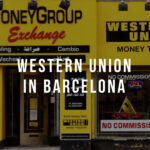 Convenient Money Transfers at Western Union near Sagrada Familia Barcelona | 94
Convenient Money Transfers at Western Union near Sagrada Familia Barcelona | 94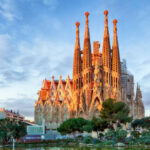 Exploring the Majestic Sagrada Familia in Barcelona: Tips for a Free Visit
Exploring the Majestic Sagrada Familia in Barcelona: Tips for a Free Visit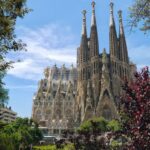 The Unfinished Enigma of Sagrada Familia: Barcelona's Architectural Marvel
The Unfinished Enigma of Sagrada Familia: Barcelona's Architectural MarvelIf you want to know other articles similar to The Imposing Location of Sagrada Familia in Barcelona you can visit the category Blog.
Leave a Reply

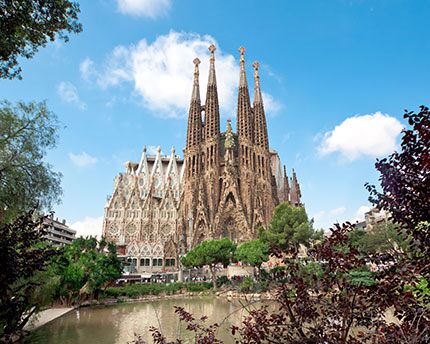
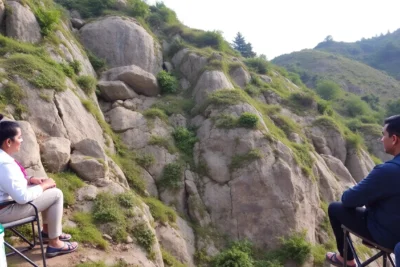
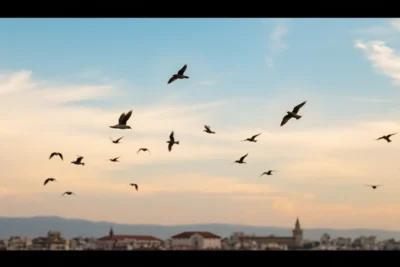



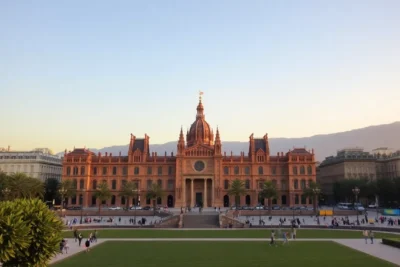

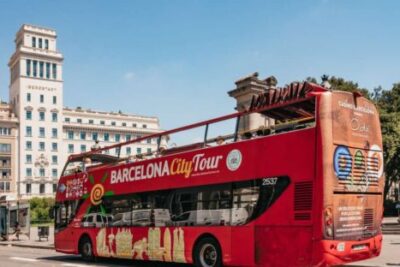
Read more!